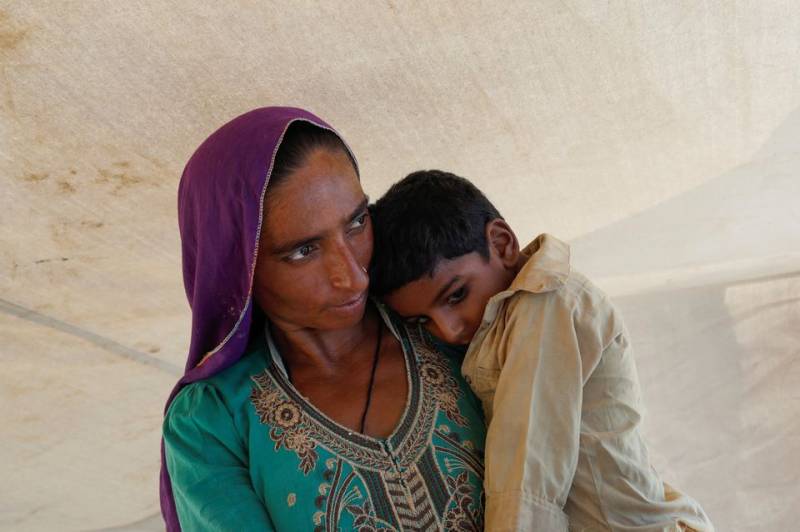
At least nine more people have died from water-borne diseases in flood-ravaged Pakistan.
According to a report published by Reuters on Tuesday, the Sindh authorities are concerned that hundreds of people may die from diseases spreading after the flooding while villagers in the province said that they are drinking and cooking with flood water due to shortages of potable water.
The National Disaster Management Authority (NDMA) said that the death toll from the floods has risen to 1,559, including 551 children and 318 women, which does not include the disease deaths. It added that the total number of injured has touched 12,850.
Water-borne diseases include diarrhoea, malaria, gastroenteritis, amoebiasis, and typhoid. A majority of such diseases worldwide mainly affect children due to weak immunity and poor hygiene.
The World Health Organization (WHO) has already expressed its concern about an impending "second disaster" of flood-borne diseases waiting to spread in the country. It said that standing water enables mosquitoes to breed and spread vector- borne diseases such as malaria and dengue.
According to a report published by Reuters on Tuesday, the Sindh authorities are concerned that hundreds of people may die from diseases spreading after the flooding while villagers in the province said that they are drinking and cooking with flood water due to shortages of potable water.
The National Disaster Management Authority (NDMA) said that the death toll from the floods has risen to 1,559, including 551 children and 318 women, which does not include the disease deaths. It added that the total number of injured has touched 12,850.
Water-borne diseases include diarrhoea, malaria, gastroenteritis, amoebiasis, and typhoid. A majority of such diseases worldwide mainly affect children due to weak immunity and poor hygiene.
The World Health Organization (WHO) has already expressed its concern about an impending "second disaster" of flood-borne diseases waiting to spread in the country. It said that standing water enables mosquitoes to breed and spread vector- borne diseases such as malaria and dengue.

